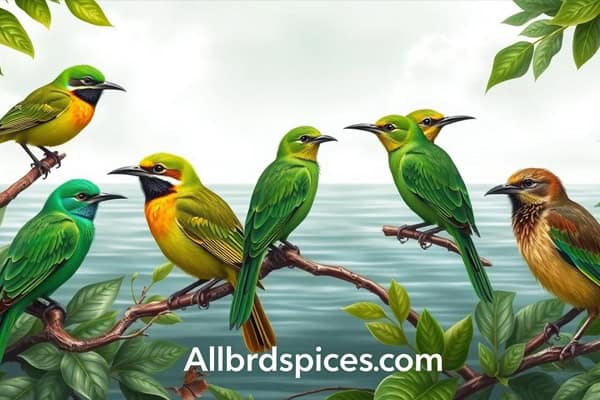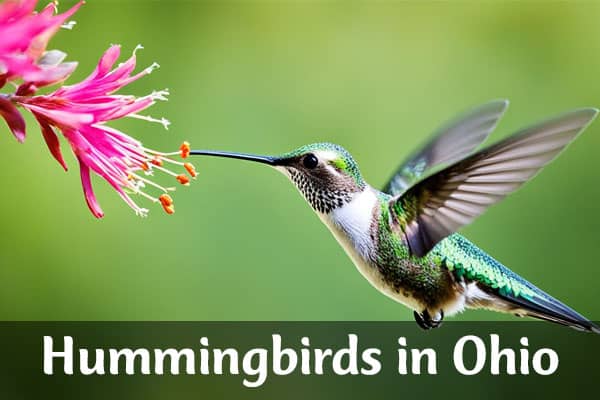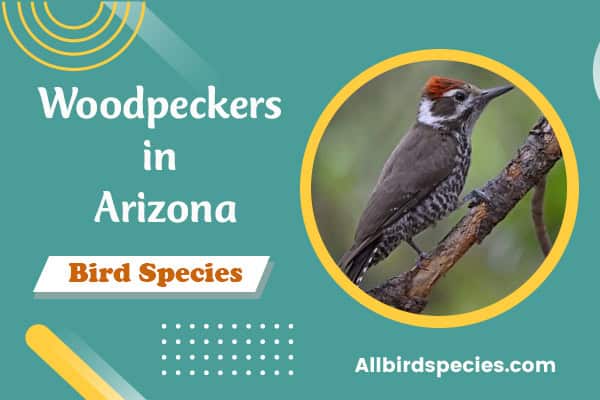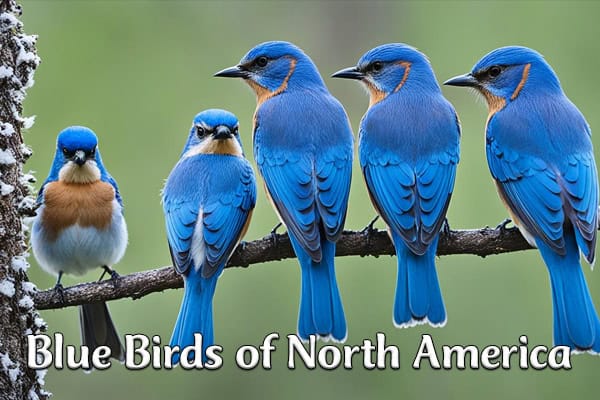8 Types of Green Birds in Sarasota Florida (With Photos)
Green birds in Sarasota, Florida, are some of the most eye-catching wildlife you’ll spot. I’ve researched the best places to see them, and there’s a lot to explore. From parakeets to herons, these birds bring color and life to the area. You’ll often find them in parks or near the water. Their bright green feathers make them easy to spot. Let’s dive into these fascinating local birds!
1. Green Heron
- Scientific Name: Butorides virescens
- Size: 38–51 cm (15–20 in)
- Weight: 250–400 g (8.8–14.1 oz)
- Lifespan: Up to 15 years
- Diet: Fish, amphibians, insects
The Green Heron, known as Butorides virescens, is a bird that birdwatchers love. Its striking looks and unique hunting ways make it fun to watch. It’s big, ranging from 20 to 24 inches, and weighs 8.8 to 14.1 ounces.
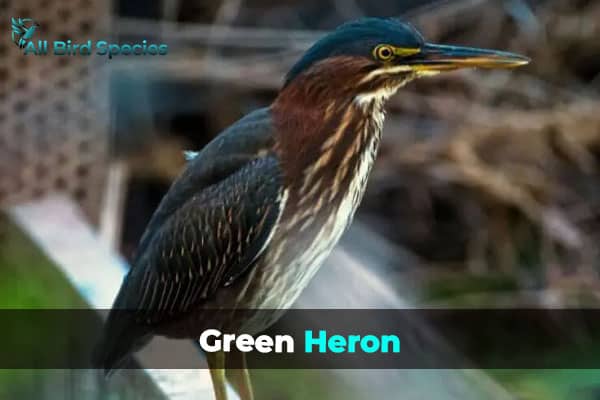
Scientific Overview of the Green Heron
We study the Green Heron to better understand birdwatching. Its unique traits set it apart from other birds. Knowing about the Green Heron makes birdwatching even more exciting.
Habitat and Behavior
Green Herons live in calm places like ponds and marshes. Their blue-green feathers help them hide. Watching them hunt is fascinating, as they wait quietly for their prey.
Diet and Feeding Techniques
Green Herons eat fish, amphibians, crustaceans, and insects. They use sticks or insects to catch small fish. This shows their cleverness and helps keep their habitat balanced.
Conservation Status
Green Herons are adaptable but face threats like habitat loss. Saving their homes is key to their survival. We need to protect their habitats to help these birds and their ecosystems.
2. Painted Bunting
- Scientific Name: Passerina ciris
- Size: 12.5–14 cm (4.9–5.5 in)
- Weight: 10–20 g (0.35–0.71 oz)
- Lifespan: Up to 10 years
- Diet: Seeds, fruits, insects
The Painted Bunting is a birdwatcher’s dream with its bright colors and unique look. Males have a stunning mix of blue, green, and red feathers. Females, on the other hand, have softer green feathers. This difference is key to their breeding and nesting.
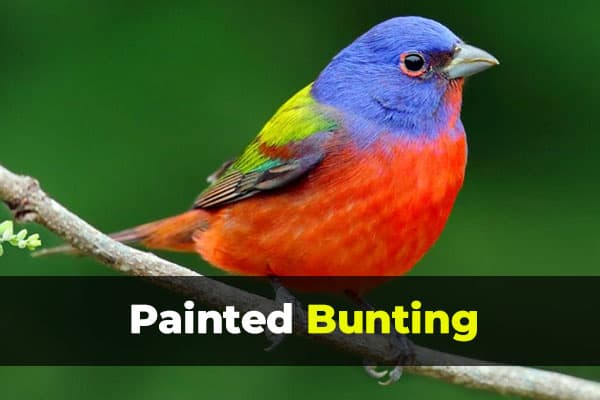
Male vs. Female Plumage
The bright feathers of male Painted Buntings are crucial during breeding. They attract mates, showing off their health. Female Painted Buntings, with their green feathers, blend in while nesting. This shows how each gender adapts to survive and reproduce.
Breeding and Nesting Habits
During breeding, males show off their colors to attract females. Once paired, both parents help with nesting and caring for their young. They build nests in dense shrubs or low trees, keeping their babies safe.
Where to Spot Painted Buntings
For those wanting to see Painted Buntings, Sarasota’s parks are great places to look. Look for them in shrubby areas and woodlands, especially in winter. Whether you’re just out for a walk or serious birdwatching, finding a Painted Bunting is a joy.
| Aspect | Male Painted Bunting | Female Painted Bunting |
|---|---|---|
| Coloration | Bright blue, green, and red | Muted green |
| Breeding Role | Displays colors to attract mates | Incubates eggs and cares for young |
| Nesting Site | Dense shrubs | Protected areas in low trees |
| Parental Care | Shared responsibility | Participates in feeding and protection |
3. Ruby-throated Hummingbird
- Scientific Name: Archilochus colubris
- Size: 7.5–9 cm (3–3.5 in)
- Weight: 2.0–4.5 g (0.07–0.16 oz)
- Lifespan: Up to 9 years
- Diet: Nectar, insects, and spiders
The Ruby-throated Hummingbird is a stunning sight for bird watchers. Its fast moves and bright colors make it a thrilling find. With some tips, we can better spot these birds in their natural setting.
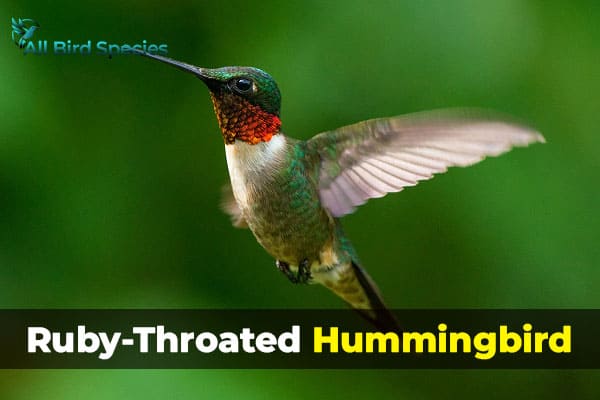
Identification Features
Knowing how to spot a Ruby-throated Hummingbird is key for bird enthusiasts. The male has a bright red throat that stands out against its dark green back. Females are less flashy but still beautiful, with green and white colors. Spotting these traits helps tell males from females.
Feeding Preferences and Nectar Sources
Ruby-throated Hummingbirds love nectar from flowers. They are agile, flying from flower to flower with ease. We can draw them to our gardens with sugar water feeders, just like their natural food sources. Their constant need for food is vital for their high energy lifestyle and helps pollinate plants.
| Feature | Male | Female |
|---|---|---|
| Throat Color | Bright Red | White/Gray |
| Back Color | Dark Green | Green with some lighter shades |
| Size | 3 – 4 inches | 3 – 4 inches |
| Feeding Habit | Nectar from flowers | Nectar from flowers |
4. Green-Winged Teal
- Scientific Name: Anas crecca
- Size: 34–38 cm (13–15 in)
- Weight: 300–500 g (10.6–17.6 oz)
- Lifespan: Up to 15 years
- Diet: Aquatic plants, seeds, invertebrates
The Green-Winged Teal is a birdwatcher’s dream. Its unique features and behaviors are fascinating. Learning about its mating behavior shows us how special these ducks are.

The male Green-Winged Teals have amazing courtship rituals. They show off their bright green ear patches and perform fancy flight moves. Their calls are also beautiful. This shows their strong connection to their environment and their desire to find a mate.
Mating Displays and Breeding
When it’s breeding time, male Green-Winged Teals get very active. They use their bright colors and do cool aerial dances to attract females. These displays are not just for looks; they also show the ducks’ ability to survive and thrive in their homes.
Preferred Habitats During Migration
The Green-Winged Teal’s migration shows how important their habitats are. They often go to shallow lakes, tidal marshes, and estuaries. These places give them food and a safe place to rest during their long journeys.
Understanding their habitat preferences helps us see how adaptable these ducks are. It’s amazing to see how they can live in different places.
Exploring Feral Parakeets in Sarasota
In Sarasota, we see a variety of feral parakeets that add to the local bird life. The Monk Parakeet stands out because of its friendly nature and smartness. These birds love living in cities, making our parks and streets more lively.
They build big nests from sticks and branches, often in trees or on buildings. Watching them talk and play with each other shows how smart and social they are. They work together to build their nests, showing their love for community.
5. Monk Parakeet
- Scientific Name: Myiopsitta monachus
- Size: 29–30 cm (11–12 in)
- Weight: 80–120 g (2.8–4.2 oz)
- Lifespan: Up to 20 years
- Diet: Seeds, fruits, vegetables
Monk Parakeets green birds in Sarasota Florida are known for their strong social bonds and ability to adapt. They make big nests from twigs and branches, which can hold many birds and their babies. It’s fun to watch them talk and work together, showing their intelligence and teamwork.

Red-Masked and Nanday Parakeets: Adding Color to Our Environment
Our area is also home to the Red-Masked and Nanday Parakeets. The Red-Masked Parakeet adds bright red to Sarasota’s scenery. The Nanday Parakeet, with its yellow and black feathers, adds to the area’s bird diversity.
Each species has its own special behaviors that add to our understanding of city wildlife. Watching these colorful birds brings happiness and shows why we need to protect their homes for the future.
| Parakeet Species | Characteristics | Habitat | Behavior |
|---|---|---|---|
| Monk Parakeet | Friendly, intelligent, green with gray | Urban areas, parks | Social flocks, complex nesting |
| Red-Masked Parakeet | Red face, green body, charming | Woodlands, urban plantings | Vocal, playful, flocking behavior |
| Nanday Parakeet | Yellow with black head, social | Tropical and subtropical regions | Bold, acrobatic, group feeding |
6. Red-eyed Vireo
- Scientific Name: Vireo olivaceus
- Size: 14–16 cm (5.5–6.3 in)
- Weight: 16–24 g (0.56–0.85 oz)
- Lifespan: Up to 10 years
- Diet: Insects, fruits, berries
The Red-eyed Vireo is a stunning sight in Sarasota’s woodlands. It has olive-green feathers and bright red eyes. Knowing how to identify them helps us understand their role in the area.

These birds love deciduous forests and shrubby areas. They thrive in places full of leaves.
Identification and Habitat
Birdwatchers need to know how to spot the Red-eyed Vireo. They blend well into their surroundings, so we must watch closely. They prefer dense thickets for foraging and nesting.
Sarasota’s diverse habitats make birdwatching exciting.
Diet and Behavior
This Red-eyed Vireo green birds in Sarasota Florida eats insects and berries. This shows they can adapt to different places. Watching them hunt is fascinating, as they dart through leaves.
Every time we see them, we learn more about their lively nature and their importance in our ecosystem.
7. Black-throated Green Warbler
- Scientific Name: Setophaga virens
- Size: 12.5–14 cm (4.9–5.5 in)
- Weight: 9–12 g (0.32–0.42 oz)
- Lifespan: Up to 5 years
- Diet: Insects, berries, and seeds
The Black-throated Green Warbler is a sight to behold with its black throat and olive-green feathers. It’s a joy to watch as it moves quickly through the trees. Bird lovers can see this species in Sarasota, especially in spring and fall.

Migration Patterns and Observations
Every year, we look forward to the Black-throated Green Warbler migration. These birds travel from the north to warmer places like Florida for winter. Their migration path gives us great chances to see them up close.
- Migration Season: Typically occurs from late March to early May and again from September to early November.
- Observation Locations: Best spotted in wooded areas, parks, and along tree-lined streets.
- Behavior: Known for their vibrant songs, which can make locating them easier during migration.
With our binoculars ready, we can watch the Black-throated Green Warbler in Sarasota’s beautiful scenery.
8. Tennessee Warbler
- Scientific Name: Oreothlypis peregrina
- Size: 11–12.5 cm (4.3–4.9 in)
- Weight: 9–12 g (0.32–0.42 oz)
- Lifespan: Up to 5 years
- Diet: Insects, nectar, berries
The Tennessee Warbler green birds in Sarasota Florida is known for its greenish plumage and gray head. It’s easy to spot during migration, making it a favorite among birdwatchers. Its unique looks are not just beautiful but also help in finding it in different places.
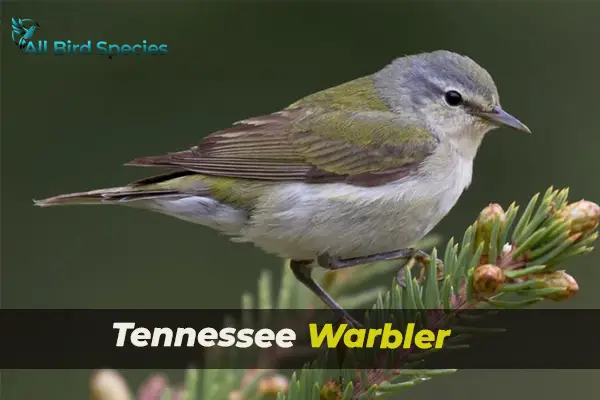
Key Identification Features
Here are the key features to look for in a Tennessee Warbler:
- Greenish-yellow body with a gray crown
- Whitish undertail with a pale wing bar
- Distinctive, sharp calls during its foraging activities
These traits make the Tennessee Warbler a joy to watch. Its ability to thrive in many environments adds to its charm.
Diet and Habitat Preferences
The Tennessee Warbler eats a lot of insects, like caterpillars, and fruits. It can be found in gardens or wooded areas, showing its adaptability. It prefers:
- Deciduous and mixed forests
- Gardens and shrublands
- Areas near water sources
This flexibility helps the Tennessee Warbler thrive in many places. It’s a delight for those who get to see it.
Green Birds in Sarasota Florida: A Summary
In Sarasota, we find a rich variety of green birds. These birds are key to the area’s health and beauty. Each one adds its own special charm to our local wildlife.
Our summary highlights different green birds, like the Green Heron and Painted Bunting. Birdwatchers love to spot these, deepening their bond with nature.
This variety shows how important these birds are to our environment. By watching and learning about them, we help protect their homes.
| Bird Species | Unique Characteristics | Habitat |
|---|---|---|
| Green Heron | Stealthy hunter | Wetlands and shores |
| Painted Bunting | Bright plumage | Shrubby areas |
| Ruby-throated Hummingbird | Rapid flight | Gardens and feeders |
| Green-Winged Teal | Beautiful markings | Marshes and ponds |
| Red-eyed Vireo | Melodic singer | Woodlands |
Exploring green birds in Sarasota makes our lives richer. It encourages us to dive into our local ecosystems. By valuing this diversity, we show our respect for nature and work to keep it for the future.
Read More🐦Related Articles:
- Small Birds with Long Tails
- Types of Conures
- Scary Bird Species
- Doves in Arizona
- Owls in Louisiana
- Doves in Michigan
Conclusion
As we wrap up our look at green birds in Sarasota, we see their beauty and variety. Birds like the Green Heron and Painted Bunting are key to our environment. They show us how nature is all connected.
Birdwatching in Sarasota can make our lives richer. It helps us love these birds more. It also pushes us to help keep their homes safe.
Let’s share what we’ve learned with others. Working together, we can help keep green birds in Sarasota for years to come.

